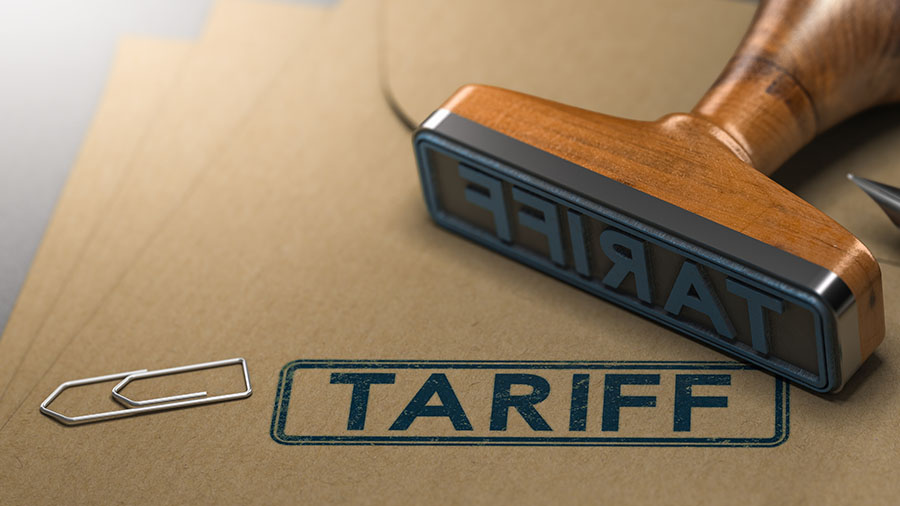China
Asia Today: China Inflation Slows; IPOs Back in Hong Kong
China’s consumer price index reveals slowing inflation. Hong Kong’s IPO market shows signs of coming back to life, with telecom and jewelry companies preparing to launch. WSJ’s Mariko Sanchanta and Ken Brown discuss.
China’s consumer price index reveals slowing inflation. Hong Kong’s IPO market shows signs of coming back to life, with telecom and jewelry companies preparing to launch. WSJ’s Mariko Sanchanta and Ken Brown discuss.
China has generally implemented reforms in a gradualist or piecemeal fashion.
The Chinese government faces numerous economic development challenges, including:
(a) reducing its high domestic savings rate and correspondingly low domestic demand through increased corporate transfers and a strengthened social safety net;
(b) sustaining adequate job growth for tens of millions of migrants and new entrants to the work force; (c) reducing corruption and other economic crimes; and
(d) containing environmental damage and social strife related to the economy’s rapid transformation.
China has emphasized raising personal income and consumption and introducing new management systems to help increase productivity.
Some economists believe that Chinese economic growth has been in fact understated during much of the 1990s and early 2000s, failing to fully factor in the growth driven by the private sector and that the extent at which China is dependent on exports is exaggerated.
Its mineral resources are probably among the richest in the world but are only partially developed.
A report by UBS in 2009 concluded that China has experienced total factor productivity growth of 4 per cent per year since 1990, one of the fastest improvements in world economic history.
Over the years, large subsidies were built into the price structure, and these subsidies grew substantially in the late 1970s and 1980s.
Globally, foreign investment decreased by almost 40 percent last year amid the financial downturn and is expected to show only marginal growth this year.
According to the ministry, China’s ODI grew by 1.1 percent from a year earlier to $56.53 billion, which includes investment of $47.8 billion in non-financial sectors worldwide, up 14.2 percent year-on-year.
China reiterated the nation’s goals for the next decade – increasing market share of pure-electric and plug-in electric autos, building world-competitive auto makers and parts manufacturers in the energy-efficient auto sector as well as raising fuel-efficiency to world levels.
China’s challenge in the early 21st century will be to balance its highly centralized political system with an increasingly decentralized economic system.
Despite initial gains in farmers’ incomes in the early 1980s, taxes and fees have increasingly made farming an unprofitable occupation, and because the state owns all land farmers have at times been easily evicted when croplands are sought by developers.
Except for the oasis farming in Xinjiang and Qinghai, some irrigated areas in Inner Mongolia and Gansu, and sheltered valleys in Tibet, agricultural production is restricted to the east.
Due to improved technology, the fishing industry has grown considerably since the late 1970s.
There are also extensive iron-ore deposits; the largest mines are at Anshan and Benxi, in Liaoning province.
China is among the world’s four top producers of antimony, magnesium, tin, tungsten, and zinc, and ranks second (after the United States) in the production of salt, sixth in gold, and eighth in lead ore.
China’s exploitation of its high-sulfur coal resources has resulted in massive pollution.
Other leading ports are rail termini, such as Lüshun (formerly Port Arthur, the port of Dalian), on the South Manchuria RR; and Qingdao, on the line from Jinan.
Read the rest here:
Asia Today: China Inflation Slows; IPOs Back in Hong Kong
China
China’s New Tariff Law: Streamlining and Standardizing Current Tariff Regulations

China’s new Tariff Law consolidates import and export duties, clarifies rules for imposing counter-tariffs, and sets a December 1, 2024 effective date. It codifies existing practices on cross-border e-commerce and rules on the origin of goods into law, impacting trade relations.
China’s new Tariff Law consolidates rules on import and export duties that were previously implemented via several legal documents and makes important clarifications and additions to prior regulations. Among other changes, it stipulates provisions for the Chinese government to impose counter-tariffs on imported goods, codifying these powers into law for the first time. We outline all the notable updates to the China Tariff Law and discuss the implications for the country’ current trade relations.
On April 26, 2024, the National People’s Congress (NPC), China’s legislature, adopted the Tariff Law of the People’s Republic of China (the “Tariff Law”) after several rounds of revisions.
The new Tariff Law will replace the Import and Export Tariff Regulations of the People’s Republic of China, which fall under the purview of the State Council, and adopts many of its provisions.
Previously, Chinese law had not stipulated legislative powers to implement countervailing tariffs, although China was nonetheless able to impose counter-tariffs on trade partners through other means.
China’s new Tariff Law comes into effect on December 1, 2024.
China’s Tariff Law elevates several existing provisions and practices to the level of law. For instance, Article 3 of the Tariff Law clarifies the obligations of cross-border e-commerce platforms for tariff withholding and implementing consolidated taxation.
The Tariff Law also solidifies the rules and regulations on the origin of goods, stipulating that the application of tariff rates shall comply with the corresponding rules of origin. Although this has been previously implemented in practice, it is the first time this has been codified into law.
This article is republished from China Briefing. Read the rest of the original article.
China Briefing is written and produced by Dezan Shira & Associates. The practice assists foreign investors into China and has done since 1992 through offices in Beijing, Tianjin, Dalian, Qingdao, Shanghai, Hangzhou, Ningbo, Suzhou, Guangzhou, Dongguan, Zhongshan, Shenzhen, and Hong Kong. Please contact the firm for assistance in China at china@dezshira.com.
China
Outlook on Bilateral Trade and Investment between China and United Arab Emirates (UAE)

The UAE and China have a strong partnership, with the UAE being China’s top trade partner in the Arab world. Both countries collaborate on various sectors like logistics and technology, showcasing mutual commitment to economic growth and global cooperation. High-level trade and investments continue to drive their relationship.
The UAE and China share a robust partnership integral to both countries’ development and foreign policy goals, exemplifying a model of collaboration. Bilateral trade thrives, with the UAE as China’s top trade partner in the Arab world, while investments span key sectors like logistics and technology. This comprehensive strategic partnership continues to evolve, showcasing mutual commitment to economic growth and global cooperation.
The United Arab Emirates (UAE) holds a significant position in China’s trade and commercial connections within the Middle East, particularly in the Arab Gulf region. This partnership is integral to China’s broader strategic initiatives, including the Belt and Road Initiative (BRI), which the UAE actively supports.
Additionally, the UAE plays a crucial role in advancing China’s foreign policy objectives, such as enhancing South-South cooperation, particularly in technical collaboration among developing nations and the Global South in areas like resources and technology.
In this article, we delve into the dynamics of bilateral trade and investment between the UAE and China, exploring the key factors driving their economic relationship and the opportunities it presents for mutual growth and prosperity.
China and the UAE first established their diplomatic relations in 1984. While China has an embassy in Abu Dhabi and a consulate general in Dubai, the UAE has a consulate general in Hong Kong and an embassy in Beijing. China and the UAE have long been close partners, collaborating extensively on economic, political, and cultural fronts.
In 2018, Chinese President Xi Jinping went on a state visit to the UAE, making history as the first Chinese head of state to visit the country in the previous 29 years. The visit was instrumental in lifting bilateral relations to a ‘comprehensive strategic partnership’.
High-level trade has always been the foundation of bilateral ties. Bilateral commerce between China and the UAE reached new heights in 2021, surpassing US$75.6 billion. Additionally, as of 2022, about 6,000 Chinese businesses operate in the UAE, with a sizable Chinese population working primarily in the infrastructure and energy sectors. The UAE is also China’s second-largest economic partner in the Middle East, after Saudi Arabia.
This article is republished from China Briefing. Read the rest of the original article.
China Briefing is written and produced by Dezan Shira & Associates. The practice assists foreign investors into China and has done since 1992 through offices in Beijing, Tianjin, Dalian, Qingdao, Shanghai, Hangzhou, Ningbo, Suzhou, Guangzhou, Dongguan, Zhongshan, Shenzhen, and Hong Kong. Please contact the firm for assistance in China at china@dezshira.com.
China
2024 Tax Incentives for Manufacturing Companies in China

China offers various tax incentives to boost the manufacturing industry. The Ministry of Finance and State Tax Administration provide guidelines on eligibility and policies. VAT exemptions and refunds are available for companies producing specific goods or services, with a monthly refund option for deferred taxes.
China implements a wide range of preferential tax policies to encourage the development of the country’s manufacturing industry. We summarize some of the main manufacturing tax incentives in China and explain the basic eligibility requirements that companies must meet to enjoy them.
China’s Ministry of Finance (MOF) and State Tax Administration (STA) have released guidelines on the main preferential tax and fee policies available to the manufacturing industry in China. The guidelines consolidate the main preferential policies currently in force and explain the main eligibility requirements to enjoy them.
To further assist companies in identifying the preferential policies available to them, we have outlined some of the main policies currently available in the manufacturing industry, including links to further resources.
For instance, VAT is exempted for:
Companies providing the following products and services can enjoy immediate VAT refunds:
Companies in the manufacturing industry that meet the conditions for deferring tax refunds can enjoy a VAT credit refund policy. The policy allows companies to receive the accumulated deferred tax amount every month and the remaining deferred tax amount in a lump sum.
The policy is not exclusive to the manufacturing industry and is also available to companies in scientific research and technical services, utilities production and supply, software and IT services, and many more.
This article is republished from China Briefing. Read the rest of the original article.
China Briefing is written and produced by Dezan Shira & Associates. The practice assists foreign investors into China and has done since 1992 through offices in Beijing, Tianjin, Dalian, Qingdao, Shanghai, Hangzhou, Ningbo, Suzhou, Guangzhou, Dongguan, Zhongshan, Shenzhen, and Hong Kong. Please contact the firm for assistance in China at china@dezshira.com.












